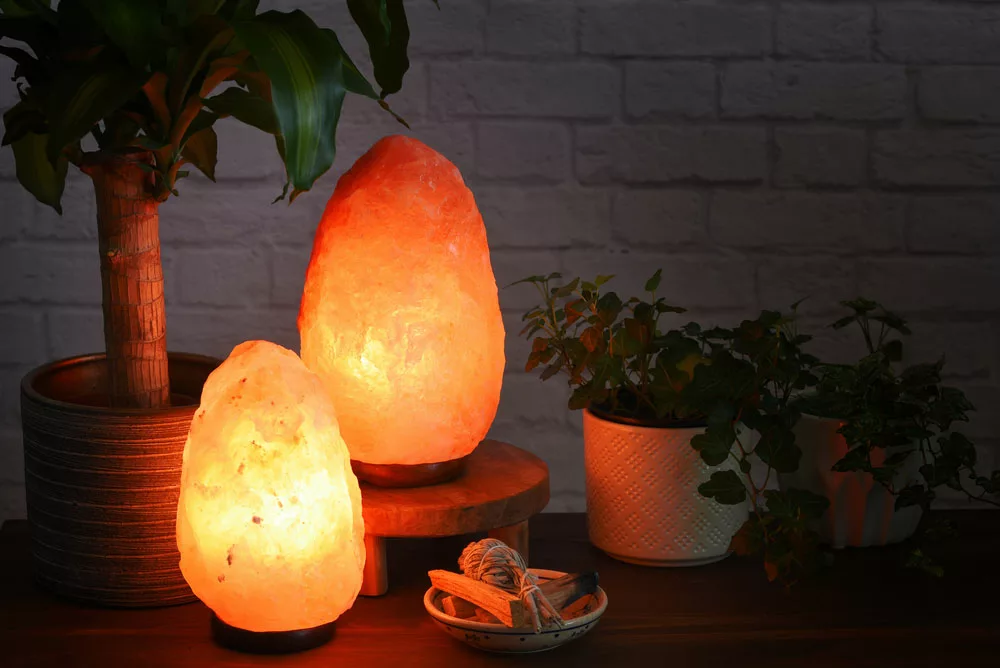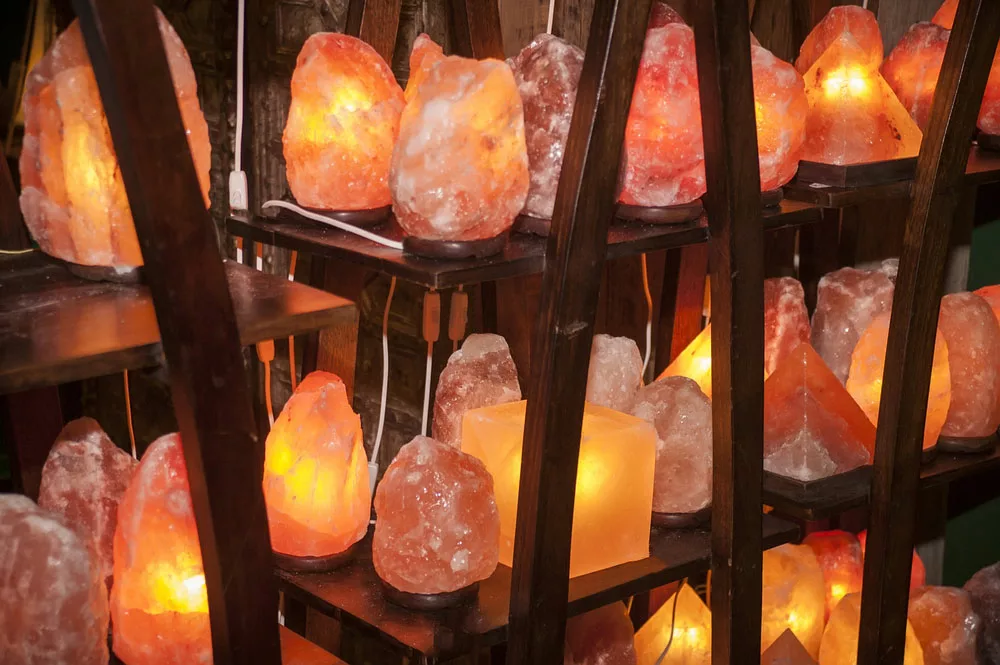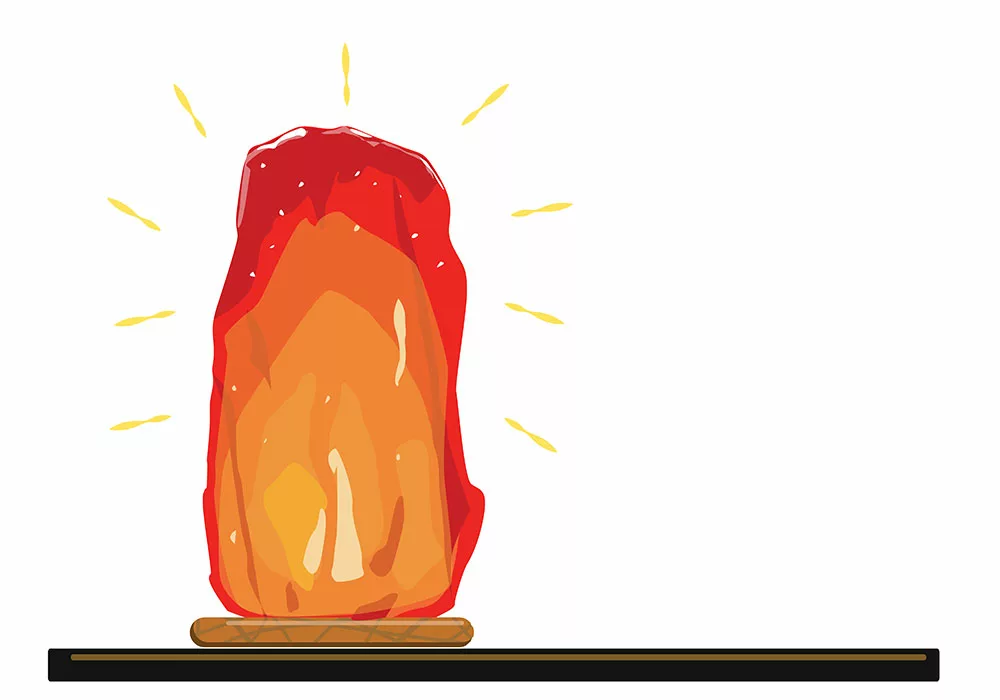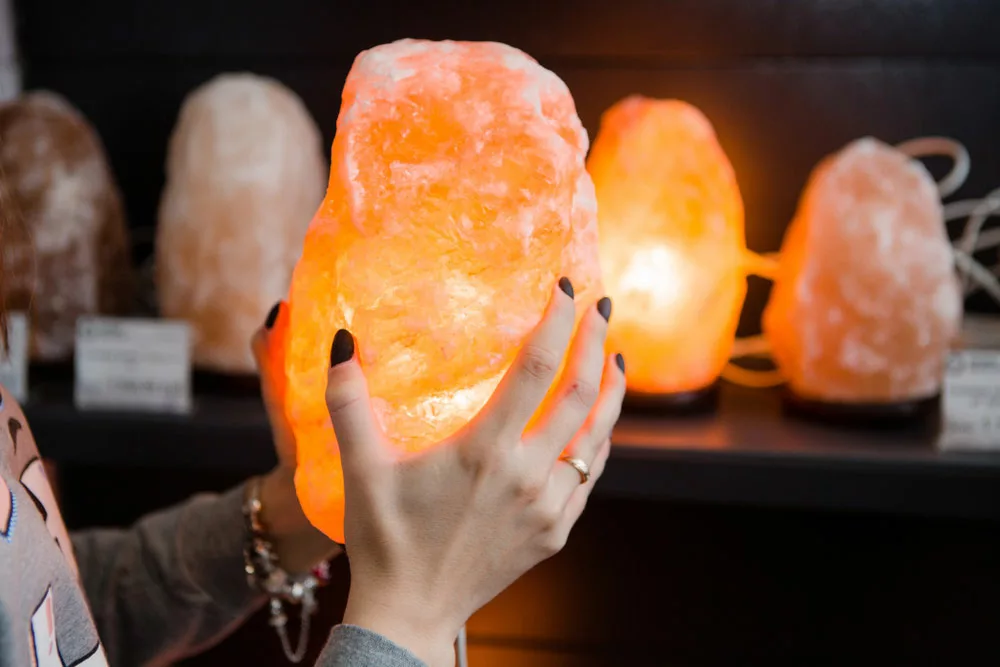Many people have made ludicrous claims about the health benefits of Himalayan salt lamps. While they may not have any direct health applications, they emit a delightful pinkish glow. Some may find the light emanating from the salt lamp to be therapeutic. You can also use it for tasteful indoor and outdoor lighting.
Nevertheless, many dealers and con artists have begun selling counterfeit Himalayan salt products. As such, you must be able to distinguish the real deal from the fake. Real salt lamp vs. fake salt lamp – how do you tell the difference between the two?
Why Do People Sell Fake Pink Salt Lamps?

Two salt lamps
There are two main reasons people sell fake salt lamps, and they include:
Real Salt Lamp vs Fake: Advertised Health Benefits
Again, salt lamps do not have direct documented health benefits besides their use in chromotherapy. Regardless, dealers still promote salt lamp hoaxes to sell more lamps.
Real Salt Lamp vs Fake: The Worth of The Himalayan Salt Market
According to financial forecasters, the Himalayan salt market will be worth USD 13 billion by 2025. Unsurprisingly, con artists and criminals can profit by selling fake lamps. Thus, shoppers must be vigilant. Here are a few tips for identifying a fake pink salt lamp.
Real Salt Lamp vs Fake: Six Ways to Identify A Fake Pink Salt Lamp

Shelves containing a collection of salt lamps of different sizes
Criminals use normal white salt crystals, acrylic, or plastic to create imitation salt lamps. Using milk, you can test the validity of granular pink salt to see if it’s fake. The milk should remain white if you pour and stir real pink salt into the milk. However, if the salt is fake, the milk will turn a pinkish color. Some brands use food dye to make normal sea salt appear Himalayan pink. If willing, you can break a small chunk off your salt lamp, grind it into fine dust and run this test. However, you may be unwilling to damage your expensive lamp. Nonetheless, there are some other ways you can spot a fake lamp.
1. Check The Price
Genuine pink salt lamps are relatively more expensive than their counterfeit counterparts. The retail price for authentic salt lamps can range from $30 to $2000 depending on the quality, appearance, and size. Jumbo (250 – 280 lbs/ 113 to 127 KG) high-quality salt lamps will cost you no less than USD 1000.
If a pink crystal salt lamp’s price seems too good to be true, then it usually is. Avoid salt lamps that are nearly miraculously affordable. Try to purchase your salt lamps from trustworthy and verified sources.
2. Check The Lamp’s Fragility
Faux salt lamps are more robust and durable than genuine salt lamps. As the guide previously stated, you can chip off parts of a real lamp and even shatter it to pieces from a high enough point. Understandably, authentic lamps are essentially Himalayan salt blocks. Thus, they’re not very resilient.
3. Compare the Strength of the Light Emission

Himalayan Salt Lamp Vector Image
Authentic lamps tend to emit a soft, warm glow. People use them for ambiance more than they do as actual light sources. Thus, if you discover that your salt lamp discharges a bright light, it’s highly likely that it is fake.
4. Ensure That The Lamp Has a Warranty
Again, this guide highlighted the importance of using verified Himalayan salt lamp dealers. Salt lamps are extremely fragile. Thus, you must check if yours comes with a warranty and be aware of the sellers’ return policy. If the store, seller, or retailer does not have a firm return policy and offers no warranty for their merchandise, they probably are not selling authentic goods.
5. Ensure That Your Salt Lamp is From Pakistan
Salt lamps aren’t actually from the Himalayan mountains. They chiefly originate from the Punjab salt caves of Pakistan. Nevertheless, these mines run from the foothills of the Himalayan mountain, so the names of these lamps aren’t complete misnomers. Regardless, you should always ensure that your salt lamp is from Pakistan. The package your salt lamp ships in should contain information about the country of origin. It may not be real if it states that the salt lamp is from anywhere except Pakistan.
6. Pay Careful Attention to Your Salt Lamp’s Moisture
Most (if not all) salts consist of sodium chloride and other electrolytes. This is what gives them their hygroscopic properties. Your salt lamp should be attracting water molecules from the ambient air. Beads of water should begin to form on your salt lamp after a few weeks of usage, especially in humid climates. If it doesn’t “sweat,” you may not have an authentic product.
FAQs

Woman Holding Salt Lamp
How long can a Himalayan Salt Lamp Stay On?
Most salt lamps use incandescent filament bulbs, lasting between 5000 and 10000 hours when you leave them uninterrupted. You can usually leave them on as long as you like. However, this is inadvisable as you should not leave most electronics unattended while they are on. Nevertheless, you can use a Himalayan salt lamp as a night light and leave it on all night.
How To Care For a Salt Lamp?
It’s natural for a salt lamp to sweat. However, you should avoid placing it in a humid area or near water. Leaving the salt lamp on will ensure that most of the moisture it attracts evaporates. Nonetheless, this is not an option for everyone. Thus, you must ensure that you wipe your salt lamp with a damp cloth and dry it off with a dry cloth. Again, you should ensure that your salt lamp uses the right light bulb. It must be an incandescent light bulb. Hence, LED-based bulbs are out of the question.
Are Fake Salt Lamps Salty?
This depends on the material. Licking your salt lamp to test if it’s salty is a good first test to ensure that your lamp is genuine. Himalayan pink salt lamps tend to be very salty because they contain literal salt. However, it won’t be salty if the lamp is plastic or non-sodium-based white crystal. Thus, many fake salt lamps are not salty.
How to Dispose of a Himalayan Salt Lamp?
Generally, salt lamps are safe to dispose of using normal means, i.e., through a waste disposal/rubbish bin. However, it would be best if you considered wrapping it in the paper so it doesn’t absorb moisture. Notwithstanding, recycling, donating, or repurposing your salt is always better for the environment than throwing it away.
Conclusion
Fake salt lamps are the only thing you need to worry about. Low-quality, sub-par salt lamps are equally as dangerous. They can leak, cause electrical hazards, and only last a few weeks or months. Again, you must ensure that you purchase your verified dealers. While Himalayan salt lamps may not improve the air quality or fulfill many other health claims, they are good for ornamental purposes. You can also use them as status symbols. The above guide explored how to discern between real and fake salt lamps vs. Nonetheless if you have any questions about lighting, do not hesitate to contact us.
